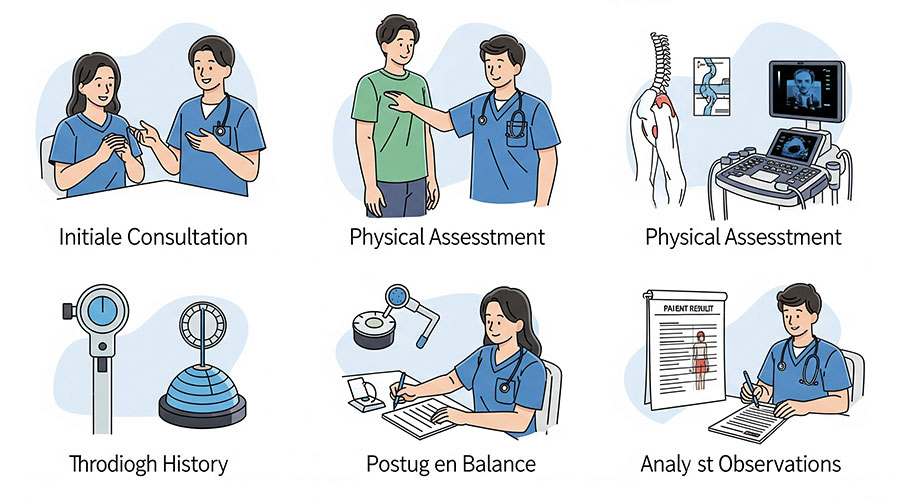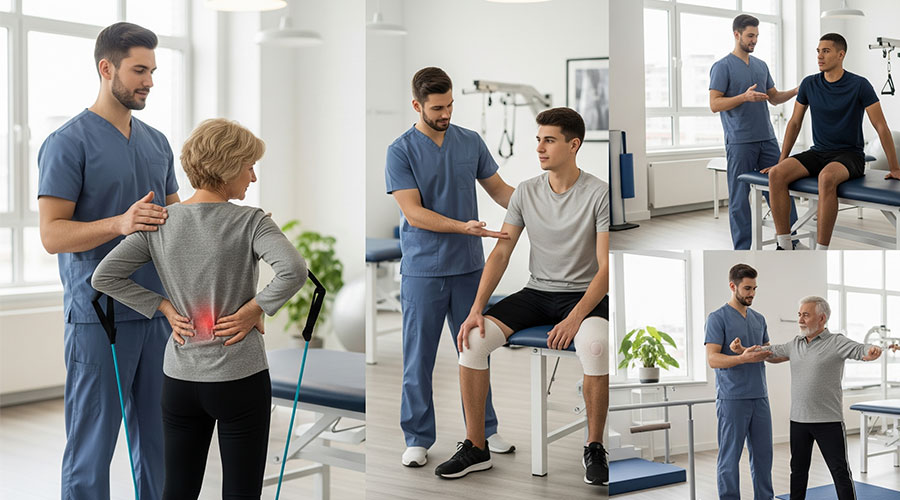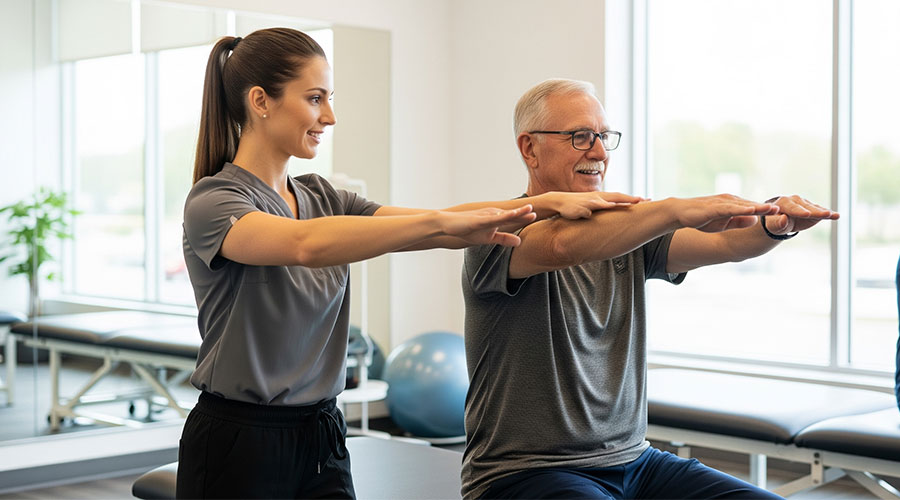Imagine you can no longer climb stairs without pain, you've had to give up your favorite sport, or even hugging your child has become difficult. These are the moments when we feel like we've lost control of our own bodies. In such times, a quiet and skilled hero enters the story: the Physical Therapist (PT)/ Physiotherapist, also known as the expert in human movement.
Many of us think a physical therapist/Physiotherapist is just someone who gives us a few exercises. But that's only a small part of a much larger world. Physical therapists are specialized medical professionals who, with their deep knowledge of the human body help us overcome pain, move again, and return to the life we love. Let's explore together what these valuable specialists actually do.
What Is Your Recovery Journey with a Physical Therapist Like?
The work of a physical therapist goes far beyond a simple treatment session. It's a comprehensive and collaborative process that involves several key steps:
1. Diagnosis: The Detective of the Movement and root cause

The first step is a complete and thorough evaluation/ consultation. Your physical therapist acts like a detective. They listen carefully to your story and your concerns, review your medical history, and then, through a physical examination, look for clues in your movement patterns, muscle strength, and range of motion. They are searching for the root cause of your problem, not just treating the symptoms.
2. Designing the Roadmap: Your Personalized Treatment Plan
This is where expertise truly shines. No two people are alike, so no two treatment plans should be the same. Based on their diagnosis and your personal goals, the physical therapist designs a fully customized roadmap to recovery. This plan is built on non-pharmacological treatments and the belief that "movement is the best medicine."
3. The Treatment: A Specialist's Diverse Toolbox

Now it's time to execute the plan. A physical therapist's toolbox is filled with a variety of scientific and diverse techniques:
Therapeutic Exercises: These are intelligent exercises designed to strengthen weak muscles, increase flexibility, and retrain correct movement patterns.
Manual Therapy: Here, the expert's hands go to work. Techniques like deep tissue massage or gentle joint mobilization are used to reduce pain, relieve stiffness, and improve mobility.
Modalities: Sometimes, tools like heat, ice, electrical stimulation (TENS), dryneedling, and dry cupping are used to manage pain and reduce inflammation.
Advanced Techniques: Depending on the therapist's specialty, they may use modern methods like shockwave therapy, vestibular rehabilitation (for dizziness and balance issues), or specialized pelvic floor treatments.
4. Education: Turning You into the Manager of Your Own Body

Perhaps the most important job of a physical therapist is to educate you. They teach you why you're having this problem and how each exercise helps you get better. The ultimate goal is to empower you enough to independently manage your condition and prevent future problems.
What Conditions Do Physical Therapists Treat?

You might be surprised to learn what a wide range of conditions physical therapists work on. They can help treat:
Musculoskeletal Pain: Back pain, neck pain, knee pain, pain from arthritis, and herniated discs.
Sports Injuries: From a simple muscle strain to rehabilitation after an ACL tear.
Post-Surgical Rehabilitation: Helping you recover faster and more completely after surgeries like a hip or knee replacement.
Neurological Conditions: Improving balance, strength, and quality of life for people with conditions like stroke, Parkinson's disease, and MS.
Balance and Dizziness Issues: Helping people who suffer from chronic dizziness.
And many more... from pelvic health to respiratory problems.
The Education of a Physical Therapist: Years of Science and Expertise

A physical therapist is not a personal trainer with a weekend certificate. They are clinical specialists with higher education. In most countries, a physical therapist must have a Doctor of Physical Therapy (DPT) degree, which is typically a 3-year post-graduate program. After graduation, they must also pass rigorous national and state licensing exams to be able to practice.
Important Note: Physical therapists are not medical doctors (MDs). They do not prescribe medication or perform surgery. Their expertise lies in treating the body through movement and physical techniques.
Conclusion: Your Physical Therapist, Your Partner in a Healthier Life
A physical therapist is much more than just a clinician; they are a coach, an encourager, and a partner on your path to recovery. They help you rewrite the story of your life—a story with more movement, less pain, and renewed hope. By trusting a physical therapist, you are not just treating an injury; you are investing in your most valuable asset: your long-term quality of life.



